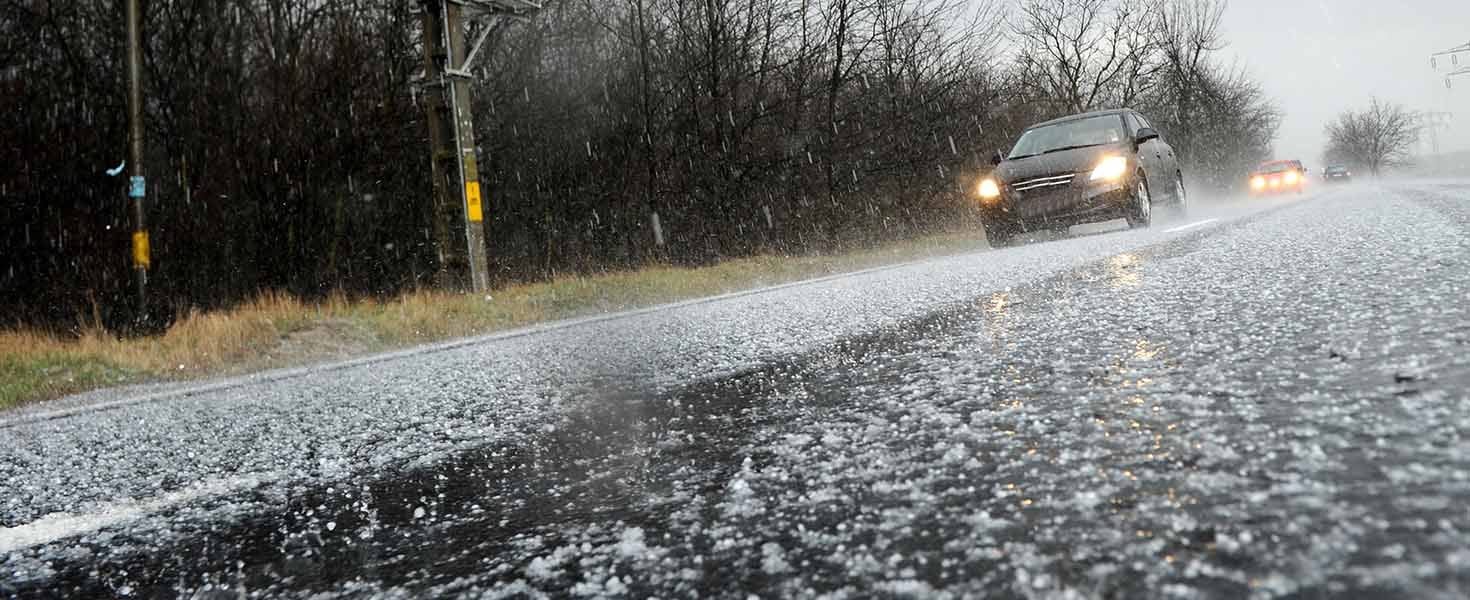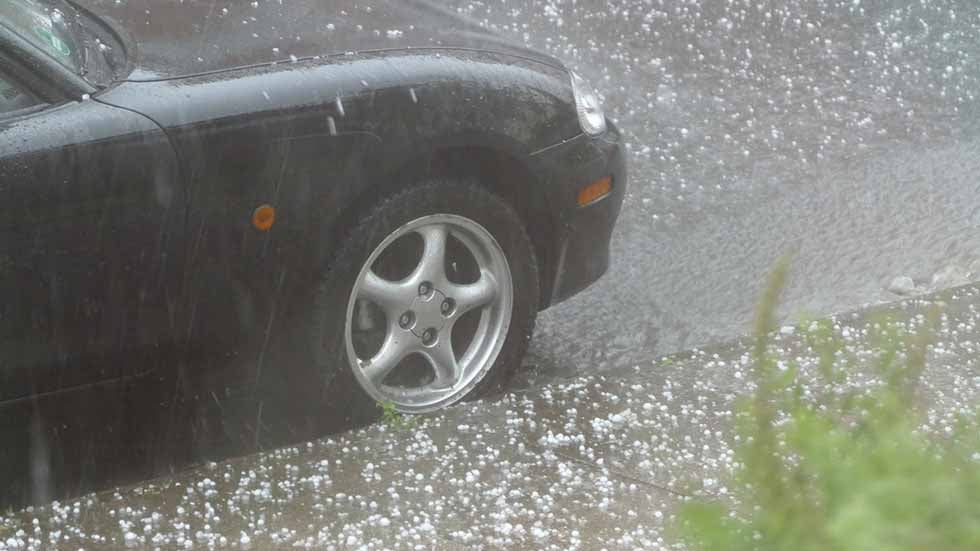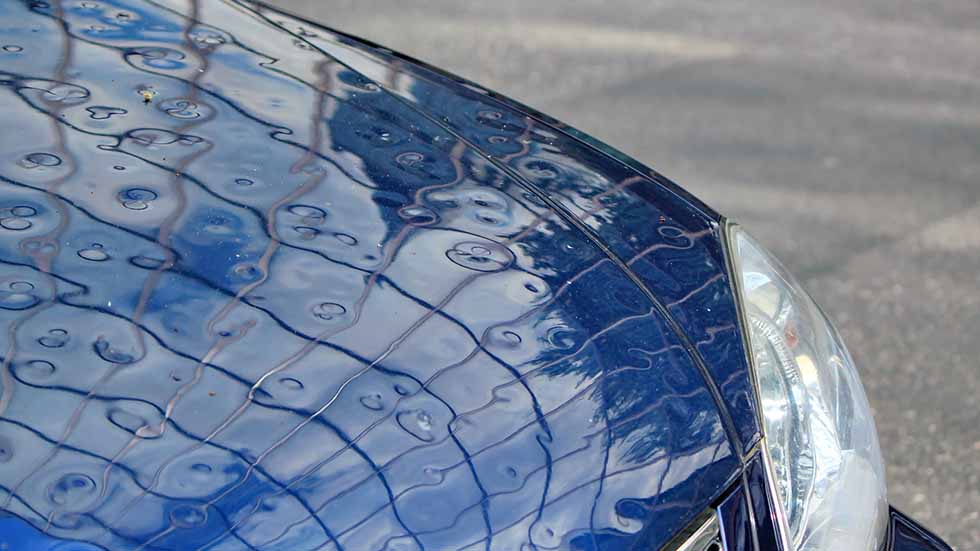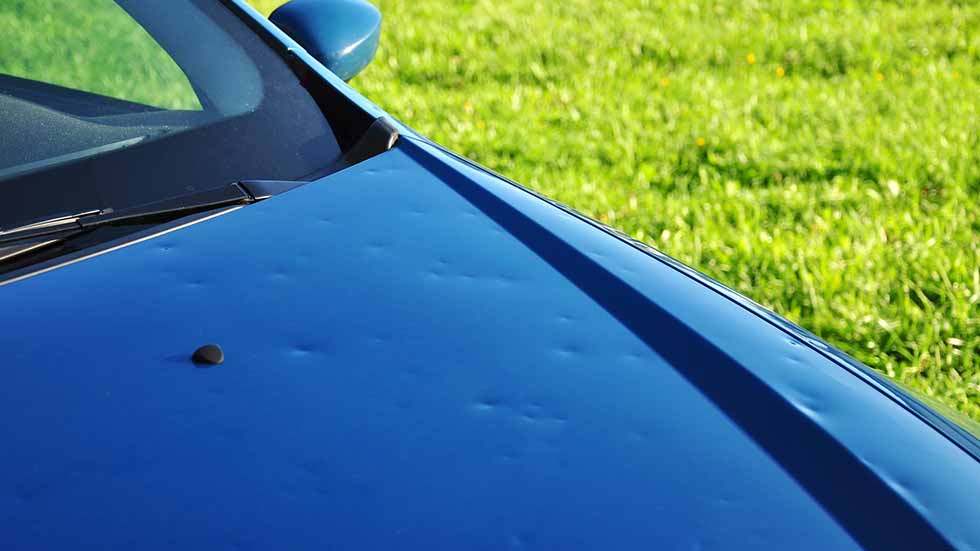
It’s not uncommon for a hailstone to be the size of a golf ball and fall to the ground at nearly 100 mph. Needless to say, that piece of ice can cause major damage to your vehicle. According to the National Oceanic Atmospheric Administration (NOAA), there were 6,045 major hailstorms in the U.S. in 2017, resulting in more than $1.7 billion in property damage, the largest yearly amount in the country’s history.
Through June of 2019, there have already been nearly 3,000 hailstorms across the country, so the opportunity for your vehicle to be damaged is very real. But that begs the question: Does car insurance cover hail damage?

WHAT EXACTLY IS HAIL?
Hail is a solid type of precipitation consisting of balls or irregular lumps of ice. A hailstone is formed during a storm when strong updrafts carry water droplets high enough into the atmosphere that they freeze. Once the ice becomes too heavy, it falls to the ground.
Hailstones can range in size from a half-inch to four inches in diameter. According to the NOAA, the largest hailstone ever recorded fell in Vivian, South Dakota in 2010. It was eight inches in diameter and weighed nearly two pounds.
Hailstorms usually occur during the spring and summer months. The warm temperatures and high humidity during this time of year help fuel storms that create hail.

DOES CAR INSURANCE COVER HAIL DAMAGE?
The answer to this question depends on the type of car insurance you have. If you own comprehensive coverage, then yes. However, if you have basic liability or collision coverage, then your vehicle will not be protected from hail damage.
Comprehensive car insurance will cover your vehicle from risks including hail and storm damage, vandalism and even theft. Keep in mind that comprehensive coverage does carry a deductible. Policy holders may want to review the deductibles they currently carry for this coverage, as they are responsible for that portion of the claim.
Liability coverage, on the other hand, is used to pay the other driver’s medical bills and property damage should you be at fault in a crash. It does not cover any damage to your own vehicle, regardless of how the damage was sustained. Collision insurance will cover damage to your car but only when it is the result of a crash.
HOW TO FIX HAIL DAMAGE
If the hail results in just a few scratches, you may be able to repair it yourself. However, it’s common for hail to break windows and create major dents in the body of a vehicle. Even if the damage seems minimal, it is best to repair it, especially if you plan on reselling the car. A car can lose significant value if its aesthetics are lacking. The best course of action to repair hail damage is to take your vehicle toan auto body shop, which can remove the dents and cover any scratches.
If the damage is done to your windshield or other windows, you should get it repaired immediately, even if it is minimal. Not only is a cracked windshield unsightly, it can be a major safety issue. Cracks can make it difficult to see the road clearly. In addition, since they are part of the structure of the car, a broken windshield can cause a vehicle to lose its structural integrity.

HOW TO PREVENT HAIL DAMAGE
Although your car insurance may protect you from hail damage, it’s best to protect your car from any damage in the first place.
Of course, if you have the opportunity to put your car in a garage or under some other sort of covered parking, you should do it. If you can’t find a roof to park under, look for a tall building and park close to a wall opposite the direction of the storm (i.e. If the storm is coming from the east, park on the west side of the building.) The storm’s strong winds should blow the hail over the vehicle.
However, you may not always have the option of finding shelter for your vehicle. If that’s the case, try placing blankets over the top of the car. Just make sure you secure them with duct tape or another type of fastener. Hail storms are usually accompanied by high winds that can easily knock the blankets off.
Some companies even sell covers specifically designed to protect your car from hail. If you live in an area that gets hit often with hail storms, you may want to consider investing in one.
